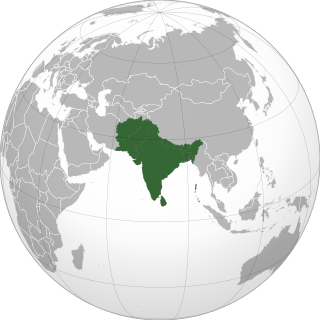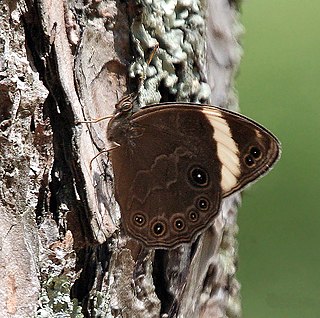In Greek mythology, Lethe, also referred to as Lesmosyne, was one of the rivers of the underworld of Hades. Also known as the Amelēs potamos, the Lethe flowed around the cave of Hypnos and through the Underworld where all those who drank from it experienced complete forgetfulness. Lethe was also the name of the Greek spirit of forgetfulness and oblivion, with whom the river was often identified.

The Vindhya Range is a complex, discontinuous chain of mountain ridges, hill ranges, highlands and plateau escarpments in west-central India.

Vindhya Pradesh was a former state of India. It occupied an area of 61,131.5 km2. It was created in 1948 as Union of Baghelkhand and Bundelkhand States, shortly after Indian independence, from the territories of the princely states in the eastern portion of the former Central India Agency. It was named as Vindhya Pradesh on 25 January 1950 after the Vindhya Range, which runs through the centre of the province. The capital of the state was the former princely state of Rewa. It lays between Uttar Pradesh to the north and Madhya Pradesh to the south, and the enclave of Datia, which lay a short distance to the west, was surrounded by the state of Madhya Bharat.

The Juggernauts is a Big Finish Productions audio drama based on the long-running British science fiction television series Doctor Who.

In the prehistory of the Indian subcontinent, the Iron Age succeeded Bronze Age India and partly corresponds with the megalithic cultures of India. Other Iron Age archaeological cultures of India were the Painted Grey Ware culture and the Northern Black Polished Ware. This corresponds to the transition of the Janapadas or principalities of the Vedic period to the sixteen Mahajanapadas or region-states of the early historic period, culminating in the emergence of the Maurya Empire towards the end of the period.

Lethe is a butterfly genus from the subfamily Satyrinae in the family Nymphalidae. The genus was erected by Jacob Hübner in 1819. It includes the treebrowns, woodbrowns, foresters and their relatives. The species in the genus Lethe occur in temperate-tropical southern and eastern Asia, up to Indonesia and in North America.
Eunoe is a feature of Dante's Divine Comedy created by Dante as the fifth river of the dead. In the Purgatorio, the second cantica of Dante's poem, penitents reaching the Garden of Eden at the top of Mount Purgatory are first washed in the waters of the river Lethe in order to forget the memories of their mortal sins. They then pass through Eunoe to have the memories of their good deeds in life strengthened.

Lethe Vallis is a valley in the Elysium Planitia on Mars, located at 4° North and 206.5° West. It is 225 km long and is named after river Lethe in Katmai National Monument, Alaska, USA. Lethe Vallis originates at the SE margin of the West Elysium Basin. West Elysium Basin probably contained a lake that was 500 km across and received water from Athabasca Vallis. It was probably formed in just days or weeks and had a discharge about like the Mississippi. Some have suggested it was formed from lava flows, but lava would not be able to flow over such a low gradient for so long a distance.

Rendu Rellu Aaru is a 1986 Indian Telugu-language comedy film, produced by Gogineni.Subba Rao under Vijaya Creations banner and directed by Jandhyala. It stars Rajendra Prasad, Chandra Mohan, Rajani, Preethi and music composed by Rajan–Nagendra. E. V. V. Satyanarayana worked as associate director to the film. The story is based on a novel of same name by Malladi Venkata Krishna Murthy.

Tikamgarh Assembly constituency is one of the 230 Vidhan Sabha constituencies of Madhya Pradesh state in central India. This constituency came into existence in 1951, as one of the 48 Vidhan Sabha constituencies of the erstwhile Vindhya Pradesh state.

Prithvipur Assembly constituency is one of the 230 Vidhan Sabha constituencies of Madhya Pradesh state in central India. Initially, it came into existence in 1951 as one of the 48 Vidhan Sabha constituencies of the erstwhile Vindhya Pradesh state, but it was abolished in 1956. This constituency again came into existence in 2008, following the delimitation of the legislative assembly constituencies. Prithvipur is small town of Bundelkhand. It's a city of politics.

Niwari Assembly constituency is one of the 230 Vidhan Sabha constituencies of Madhya Pradesh state in central India. This constituency came into existence in 1951, as one of the 48 Vidhan Sabha constituencies of the erstwhile Vindhya Pradesh state.

Malhara Assembly constituency is one of the 230 Vidhan Sabha constituencies of Madhya Pradesh state in central India. This constituency came into existence in 1951, as one of the 48 Vidhan Sabha constituencies of the erstwhile Vindhya Pradesh state, but it was abolished in 1956. It again came into existence in 1961, following delimitation of the legislative assembly constituencies.

Panna Assembly constituency is one of the 230 Vidhan Sabha constituencies of Madhya Pradesh state in central India. This constituency came into existence in 1951 as one of the 48 Vidhan Sabha constituencies of the erstwhile Vindhya Pradesh state.

Chhatarpur State was one of the princely states of India during the period of the British Raj. It was ruled by Parmar clan of the Rajputs. The state was founded in 1785 and its capital was located in Chhatarpur. It was located within what is now the state of Madhya Pradesh.















